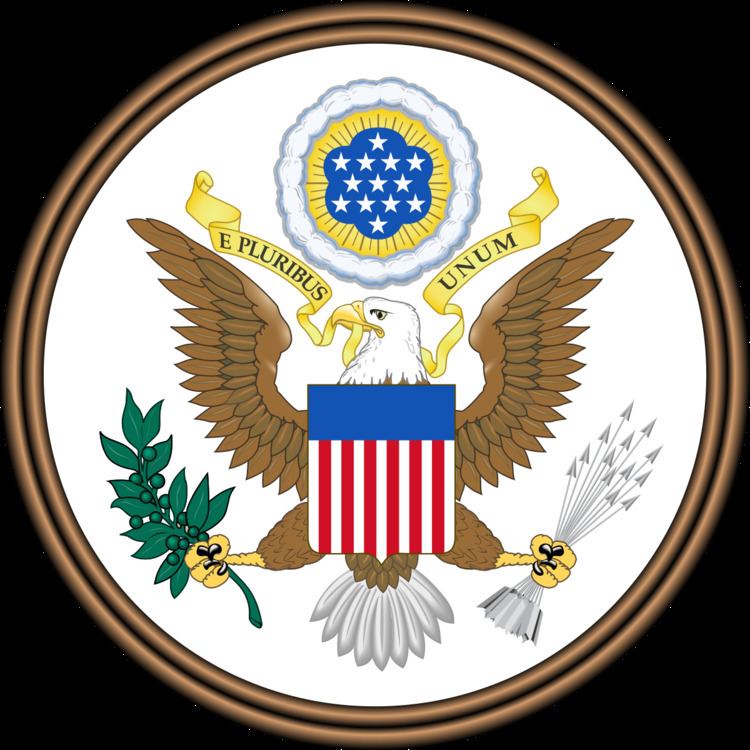Public law 60-60 | ||
 | ||
Long title An Act To encourage the reclamation of certain arid lands in the State of Nevada, and for other purposes. Statutes at Large 41 Stat. 293–295, ch. 77 | ||
The Pittman Underground Water Act (introduced as S. 9) was an Act of Congress, that was approved on October 22, 1919 and was repealed on August 11, 1964. The public law gave the Secretary of the Interior the power to hand out permits to American citizens and associations to drill for and look for groundwater on public lands in Nevada. In addition, the law gave the Secretary the power to give patents to permittees who found enough groundwater to sustain a farm. The law was supposed to stimulate agriculture in Nevada, since it was thought that the absence of surface water undermined the growth of the agricultural sector in Nevada.
Contents
The Pittman Underground Water Act was applied in BedRoc Limited, LLC v. United States, a 2004 decision by the United States Supreme Court. The Court argued that sand and gravel were no "valuable minerals" that were reserved to the government of the United States under the Pittman Underground Water Act and reversed the decision of the Ninth Circuit.
Background
During the 1910s, the Tonopah and Tidewater Railroad wanted to attract farmers to the Amargosa Valley in Nevada, so that more people would use the railroad. In 1915, the company established a demonstration farm near Leeland, called the T&T Ranch, to show people the farming possibilities of the area. However, no homesteaders settled in the area, since the Homestead Act included terms that were hard to meet. For example, a surface water supply sufficient to grow crops on 160 acres of land had to be established. The Tonopah and Tidewater Railroad wanted better conditions for homesteaders and convinced Key Pittman, a United States Senator from Nevada, in 1916 to sponsor a bill that provided them.
Senator Francis G. Newlands, who represented Nevada, was the father of the main irrigation legislation passed before the Pittman Underground Water Act. However, his ability to make a law that was favorable to Nevada was restricted by the fact that he was practically the only Democrat from the western United States. Before the Pittman Underground Water Act was approved, numerous proposals failed to pass Congress that would have provided funding for the exploration of groundwater in Nevada.
Legislative history
Senator Pittman worked for four years on the bill to improve the irrigation conditions in Nevada. His bill passed the Senate three times, but it failed to pass the House each time. After Charles R. Evans became member of the House of Representatives, the law passed the House as well during the first session of the 66th Congress without any amendments. The bill passed the Senate and the House on July 9, 1919 and October 6, 1919, respectively. The Pittman Underground Water Act was referred to the Committee on Irrigation of Arid Lands, and it was approved on October 22. Two years later, a law was approved by the 67th Congress that made it possible for the Secretary of the Interior to extend the period in which the permittee had to find groundwater with a maximum of two years. This addition passed the Senate and the House as S. 2983 on March 31, 1922 and June 30 of the same year, respectively. The bill was approved on September 22.
The law didn't succeed in stimulating the Nevada agricultural sector significantly and was therefore repealed by the 88th United States Congress in its second session. The bill that repealed the Pittman Underground Water Act was introduced in the House as H.R. 1892 by Colorado Representative Wayne N. Aspinall and passed the House on March 18, 1963. It passed the Senate on August 1, 1964 and was approved ten days later. All applications for permits that were filed before the law was repealed were unaffected by the repeal.
Contents
The Pittman Underground Water Act states that the Secretary of the Interior has the right to give permits to drill for and look for groundwater in the state of Nevada. Such permit can be granted to any American citizen or association and the receiver is given the exclusive right to look for groundwater in an area of not more than 2,560 acres for a maximum of two years. This land should be public and furthermore unreserved, unappropriated, non-mineral, and non-timbered. Moreover, it is not possible to apply for land where irrigation is already known to be possible. Someone can receive only one permit per 40 miles (64 kilometres) square. Moreover, the receiver of the permit is not allowed to build a fence around the land and he cannot deny others from using it.
The law also states that a filing fee has to be paid for applying for a permit. After a person receives a permit, he must start searching for water within six month and he must continue doing so regularly until he has found groundwater. If a receiver of a permit doesn't meet the conditions, the permit is cancelled and the receiver can't apply for another one. The receiver of the permit can acquire a patent to the land when he has discovered enough groundwater to maintain crops on an area of at least 20 acres and has developed it. When a patent is granted, the receiver acquires a fourth of the land of the permit (not more than 640 acres). The remainder of the land can be acquired for agriculture only under the terms of the Homestead Act of 1862. The last section of the Pittman Underground Water Act states that "all the coal and other valuable minerals" are reserved to the United States and that the United States has the right to remove them.
